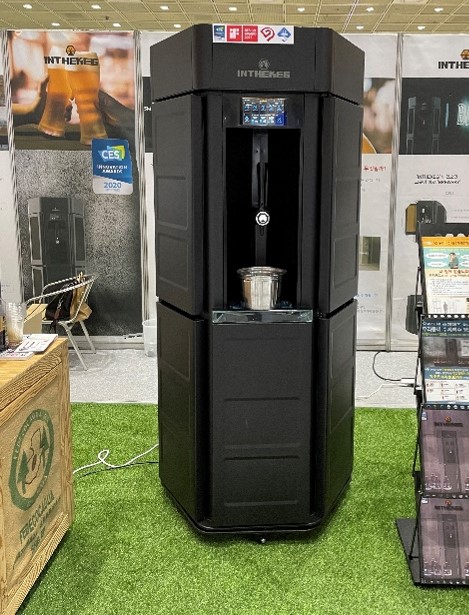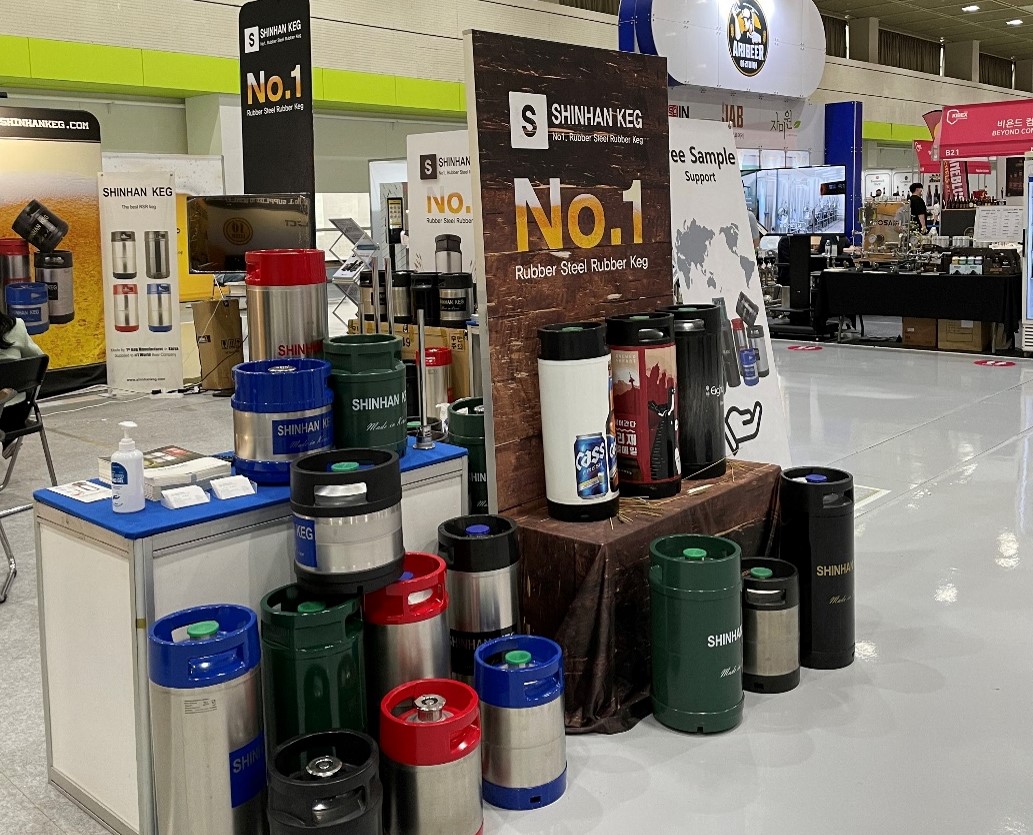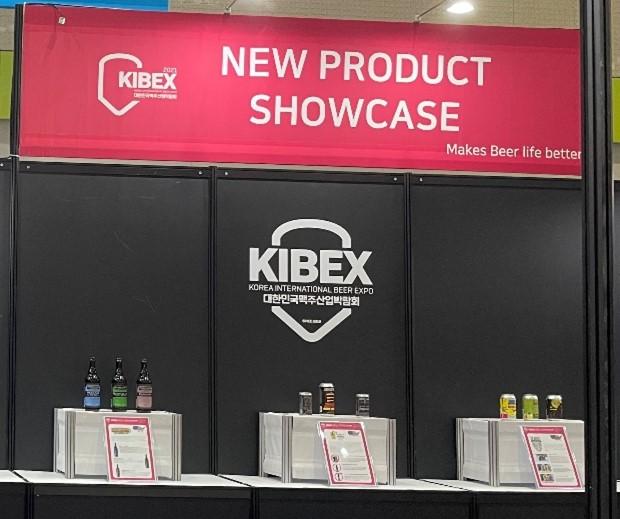KIBEX 2021 – The 3rd Korea International Beer Expo
Exhibition Information
May 17th ~ 19th, 2021
Coex, Seoul
https://www.beerexpo.kr/en_main/
Categories of Exhibits:
Brewery (domestic and international)
Accessory
Raw materials, Ingredients
Other related products
Distribution
MD Products
Service and education
Equipment/facilities
Franchise
Food
2020 Exhibition History
- 130+ exhibitors
- 7,300+ visitors
Exhibition Overview

Even though COVID19 is still ongoing, the KIBEX 2021 opened with great success. There were COVID prevention measures in place to minimize risk. Everyone had their temperature checked, use hand sanitizer and wear gloves to enter the exhibition hall and wear masks at all times.
Over ten Korean breweries offered tasting samples of their award winning beers.

While the Korean breweries dominated the show, a number of imported beers were also present at the exhibition. There were special booths for the American craft beers and Spanish beer.
While Covid has negatively affected beer consumption at bars and restaurants, drinking at home alone created new trends in the beer market. One of the new trends is brewing beer at home. Moreover, there are companies that developed machines that are similar to coffee machines which brew beer.

These products promote that their beer provides a freshness that mass produced beer cannot provide.
There were also products related to the beer market such as kegs, packaging equipment and other related products.

There were also various events related to the beer industry with a design award, design & packaging forum, new product showcase and German beer seminar.

Beer Industry
The Ministry of Food and Drugs Safety, ‘2020 Alcoholic Beverage Consumption Survey Results’ reported that 96% of all the survey participants had drunk beer in the past six months. Beer accounts for over 50% of the alcoholic beverage market and overall beer market size in 2019 was about KRW 3.8 trillion (USD 3.4 billion). But in the long history of Korean alcoholic beverages, beer has only recently become the leader.
Before the 1980s, the alcoholic beverage market was dominated by soju, a Korean distilled alcoholic beverage. However, with the demand for variety and reduced alcohol percentage, beer started to grow in the market.
Beer was first introduced by Japan in 1876. Oriental Brewery (OB) and Crown entered the market as the only two beer producers in Korea. Now domestically there are three companies that dominate the beer market OB, HiteJinro and Lotte Chilsung.
In the past, Korean drinking culture was characterized by a business environment known as hoishik, a business dinner usually involving alcohol. Attending a hoishik was important in doing business as most important business decisions took place outside the office. Therefore, most drinking environments were based on drinking together. The trend started to shift with the Kim Young-ran Act also known as the anti-graft law, that severely limited business entertainment. Moreover, working hours are being limited by law and people have time to enjoy leisure time leading to the emergence of holsulers.
Honsul is a new trend of drinking alone. Drinking in groups usually requires more time and a different pace of drinking. Honsul allowed people to drink on their own when they have time in an environment that they could enjoy. This is a big change from what dinking meant in Korea in the past.
The available variety of beer started to grow from 2014 as the regulations for craft beer and imported beer started to loosen. The revision of the Liquor Tax Law in 2014 provided opportunities to craft beer breweries as they were permitted to distribute outside of the breweries in retail stores, convenient stores, supermarkets and other distribution channels. Also, a great number of imported beers have entered the market with aggressive promotions. While overall beer consumption decreased, imported beer consumption incased.
Imported beers had massive sales with the sales promotion (KRW 10,000 (USD 9) for four, 500 ml cans compared to a single can at around KRW 3,500 (USD 3)). However, this has changed when the Liquor Tax Law was revised again. In 2020, alcohol taxation changed from a value base system to a volume-based system. Imported beer were able to provide a competitive price based on the value base taxation system, but after the renewal domestic beer was able to compete with similar prices.
With COVID19, the environment of beer consumption changed rapidly. Pre-COVID19 the consumption of beer took place outside the house (80%) in restaurants or bars. The ‘social distancing’ stripped the sales of the outside beer consumption. Therefore, companies started to focus on promotion for ‘honsulers’, with the keyword of inperience (indoor + experience).
Navigating these sudden and dramatic changes can be challenging for foreign players. However, IRC Consulting is here to be your 'feet on the ground' and support your business to thrive in Korea.
|